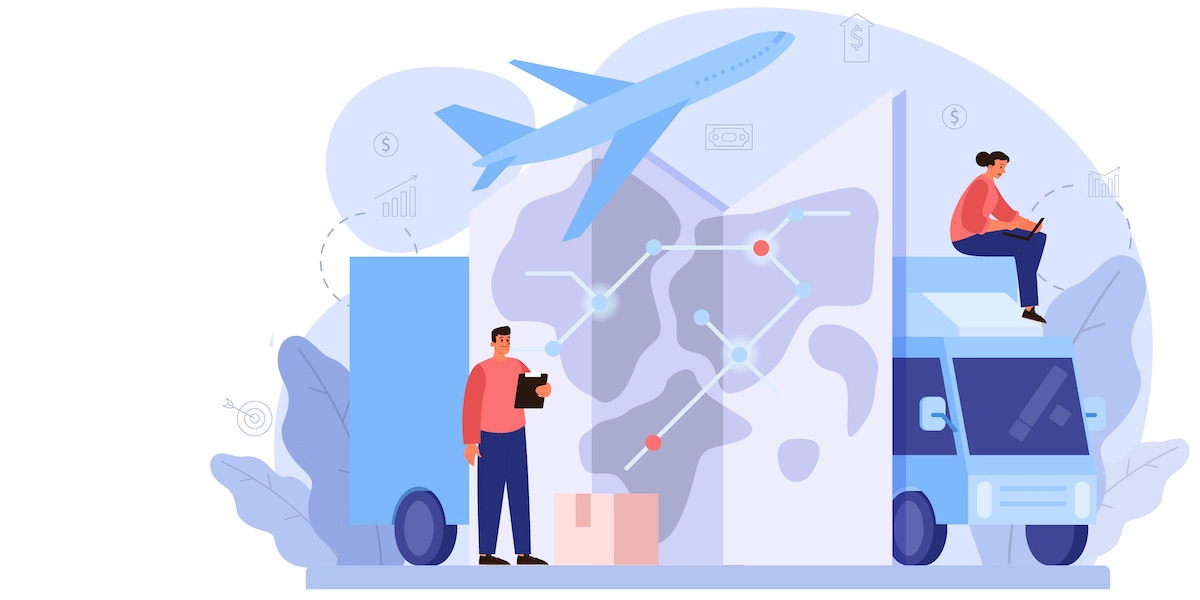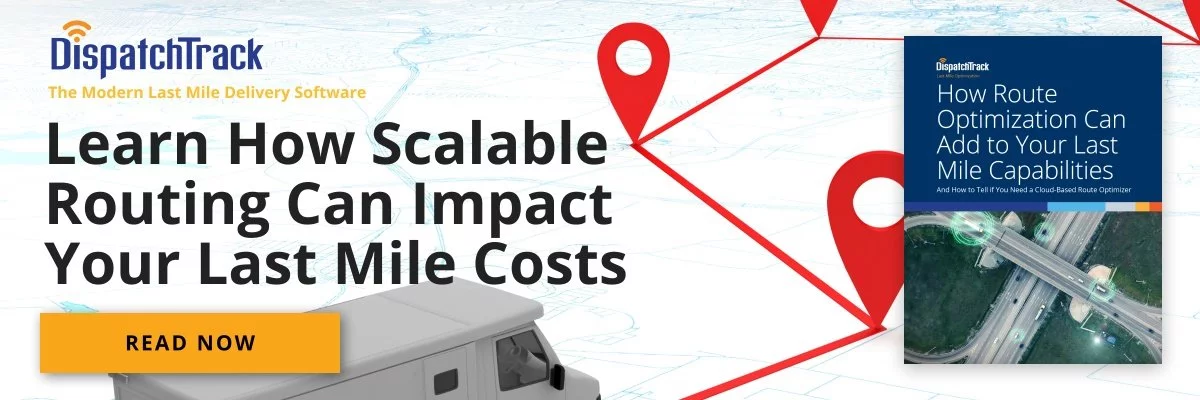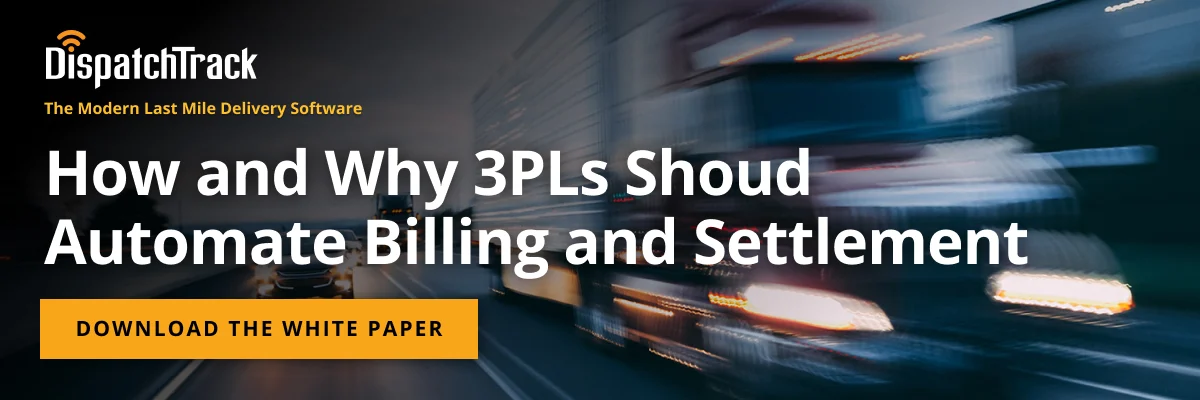Advancements in technology are disrupting industries around the world—particularly the logistics and transportation industries. New technologies and their increasing adoption are already changing how goods, materials, sales, production, inventory, and deliveries are managed, and that change is only going to quicken in pace from here.

For the transportation industry, this evolution has the potential to be a huge boon. Modern transportation software enables companies to eliminate inefficiencies in last mile logistics and other areas, and the enterprises that have invested in transportation software are now enjoying its benefits.
In this article, we will discuss the basics of transportation software, its benefits, and which features enterprise businesses in particular need to look for when adopting a new solution.
The Basics of Transportation Software
Transportation software simplifies last mile logistics by automating processes, eliminating inefficiencies, and providing stakeholders with useful data and information.
This enables you to ditch conventional approaches such as spreadsheets, printed out maps, and manual data entry. It allows fleet managers to supervise both in-house and third-party logistics (3PL) delivery teams more efficiently—which only becomes more crucial as your delivery operations get larger. Simply put, you can’t manage last mile deliveries effectively and efficiently without the right software.
The Benefits of a Transportation Solution
Faster deliveries
Consumers (or even B2B buyers, these days) want fast and reliable shipping options, and they’re more likely than ever to go out of their way to look for businesses who can provide them with what they need. Luckily, the right solution can help you offer faster delivery options by automating dispatch and route planning processes. When you cut manual efforts out of the routing and dispatching processes, you can route orders and get them out the door more quickly—all while benefiting from the increased capacity utilization that comes from smart route optimization technology.
More reliable deliveries
Again, traditional processes in the last mile logistics such as manual routing and dispatching are prone to human errors and inefficiencies. For example, manual route planning involves the use of spreadsheets, navigation maps, and printed route assignments; human planners, regardless of their experience, still cannot compete with the computing abilities of the right solution. The result of planning routes manually is that drivers don’t take the most efficient routes, and it’s difficult to pinpoint precise ETAs for particular stops.
Your last mile solution should consider the different variables in route planning and dispatching to find the most cost-effective and fastest routes and optimal driver assignment in just a matter of minutes. This kind of route optimization offers accurate ETAs, which makes deliveries more reliable and less prone to disruption.
Reduced costs
Transportation software lowers fleets’ operating costs by reducing fuel expenses, vehicle wear and tear, and maintenance costs while maximizing drivers’ time and the company’s resources. This is another area where larger businesses have the potential to gain a lot more from potential cost optimizations. With so many moving parts across your operation, there are plenty of opportunities to pinpoint and address unnecessary costs.
Transportation Software Must-Have Features
You should avoid settling for just any last mile transportation software. There are big differences in functionality between the different options, and it’s crucial to opt for software that truly optimizes your last mile transportation management from end to end. Below are some of the basic features to keep in mind:
Route optimization
Again, optimizing routes and dispatching is key to ensuring smooth fleet operations. Without an advanced route planning app and automatic dispatching features, fleets will suffer from inefficiencies that will result in missed or failed deliveries, higher operating costs, higher driver attrition, and poor customer satisfaction.
Scalability
A worthwhile transportation management solution should allow you to scale delivery operations as needed. Order volumes change all the time based on seasonality and other factors, and you need to be able to use your resources efficiently regardless of the circumstances. Ideally, you’d find a solution that makes it easy to route and manage thousands of routes without missing a beat.
Invoicing integration
Disparate systems cause errors and delays in billing and invoicing. A tool that integrates financial processes like billing clients and settling with drivers with the delivery operations that those invoices and settlements are meant to reflect can save time, effort, and significant rework.
High quality UX
A good last mile transportation solution should have an easy-to-use, streamlined interface so users will have an easy time using it. Businesses have different needs and the right solution should be able to accommodate each company’s requirements without any workflows becoming too byzantine. This isn’t just a matter of convenience: intuitive interfaces save time and increase supply chain visibility by saving users the hassle of hunting around for the right information.
Cloud computing
We already talked about scalability above, but it bears a little bit more discussion: these days, legacy transportation software just doesn’t cut it. On-prem solutions don’t give you the ability to scale up your planning and management easily, which potentially slows you down at the most critical moments. Cloud-based solutions, on the other hand, can be built to scale—putting you in a position to route as many trucks and stops as needed even when order volumes spike.
Plus, cloud-based transportation solutions are most cost-effective as companies do not have to pay for an in-house IT team to handle maintenance and upgrades. Businesses also don’t have to pay a fixed fee as they only need to pay for what they use. Experts predict that cloud-based solutions will dominate not only transportation management but also supply chain management as a whole, and it’s easy to see why.
Why Last Mile Transportation Software Is Key to Efficiency
Transportation management solutions empower enterprises to achieve better efficiency over their last mile operations by replacing existing conventional methods with smart, automated processes. The various features of the right solution can improve collaboration and optimize resources, which is the essence of effective fleet management at scale.
It’s important to choose software that meets the above-mentioned criteria, as well as finding something that meets your unique business needs. By investing in a transportation management solution, you can offer more delivery options, reduce operating costs, better meet customers’ expectations—and do it all at as large a scale as needed.

